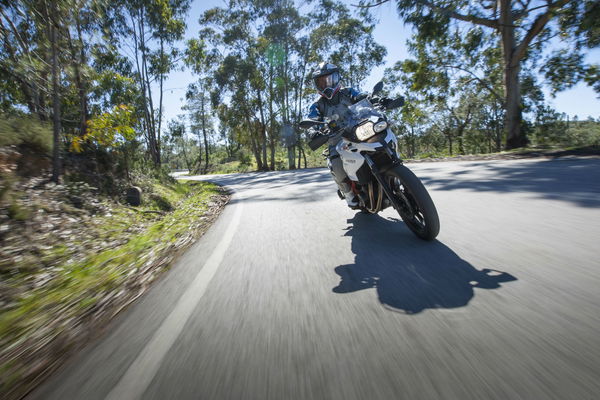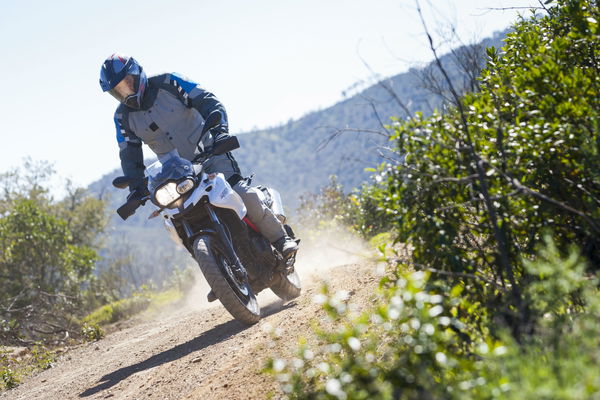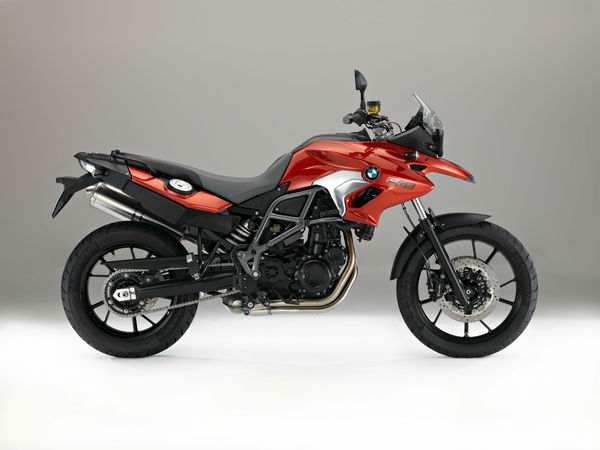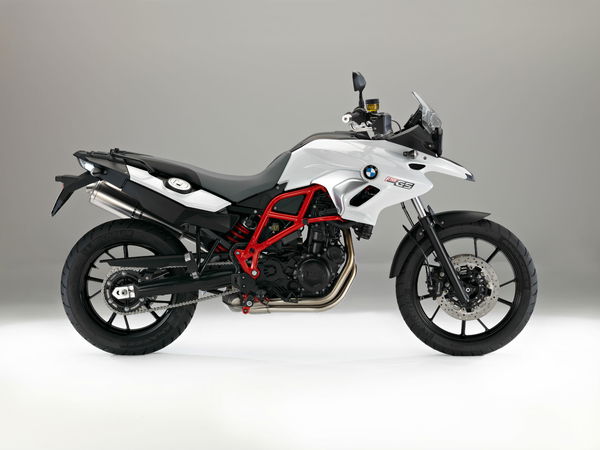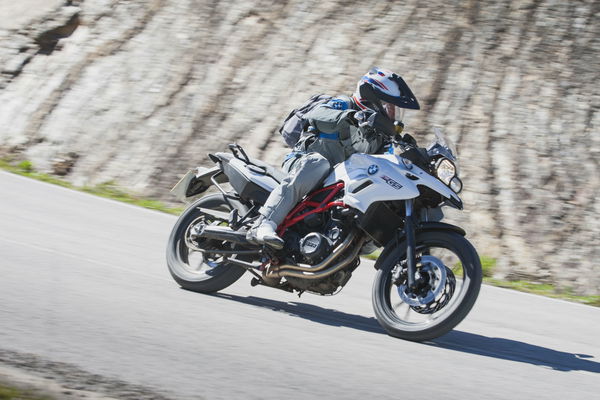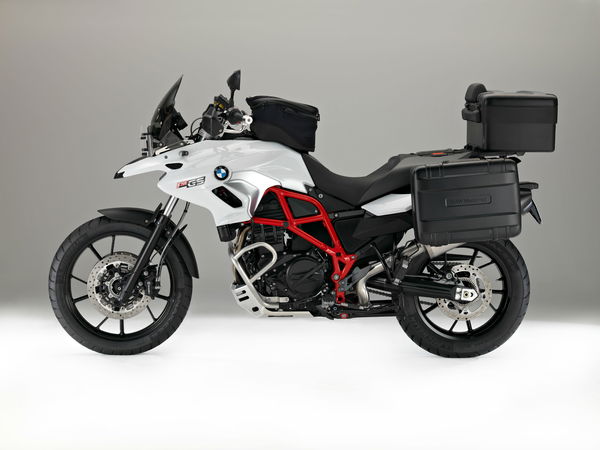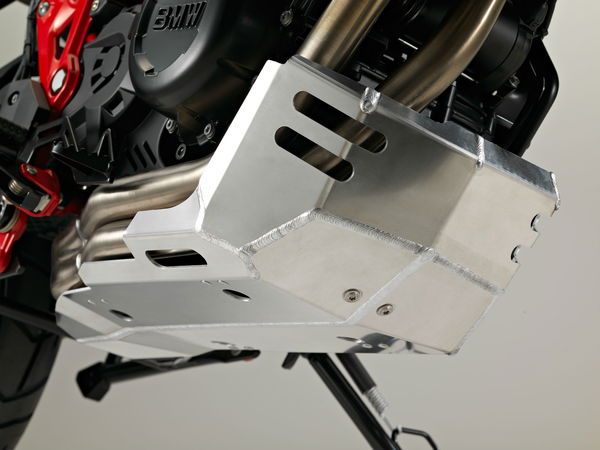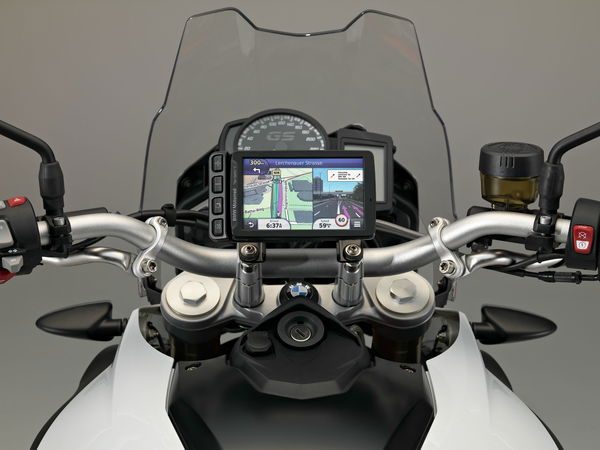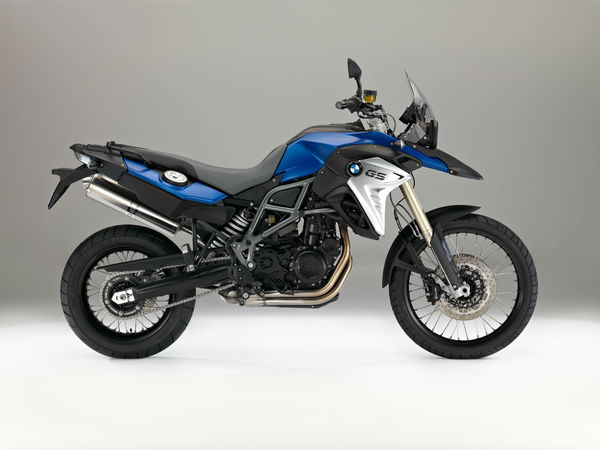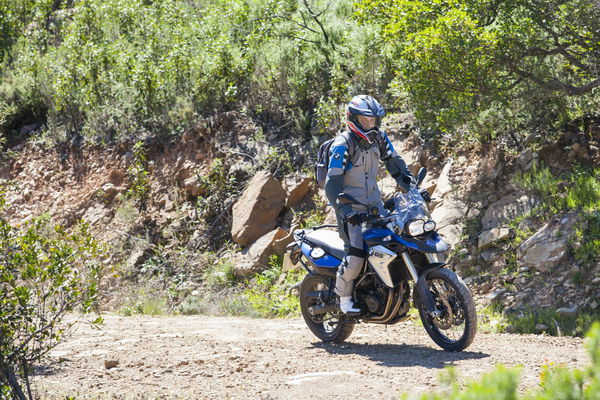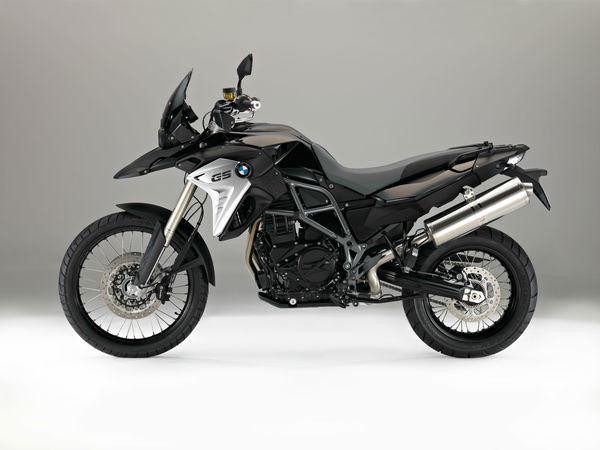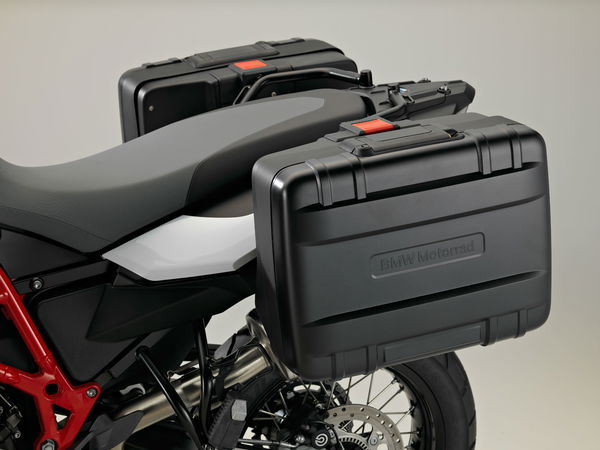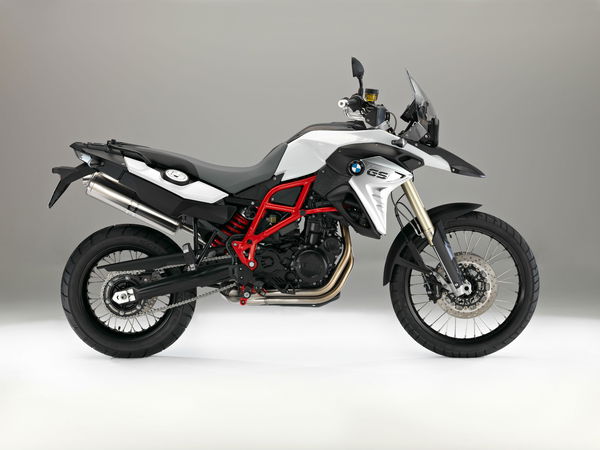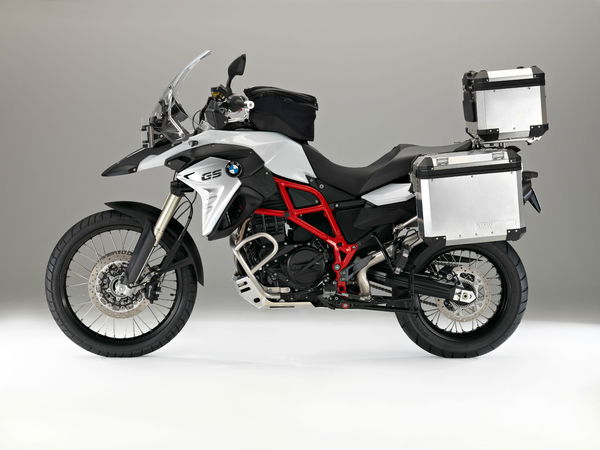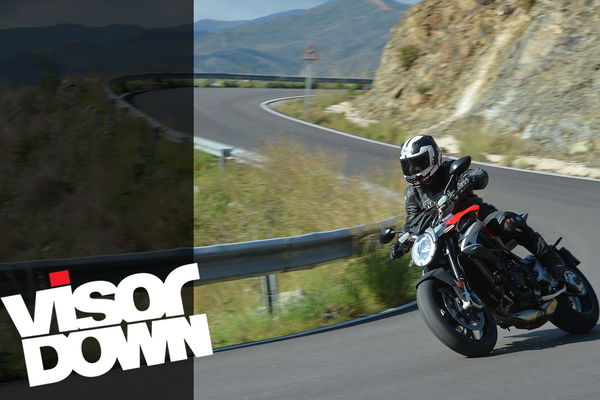First ride: BMW F700GS and F800GS review
Updated adventure bikes prove you don't have to spend a fortune to join the BMW family – but you need to decide how you're going to use them before choosing
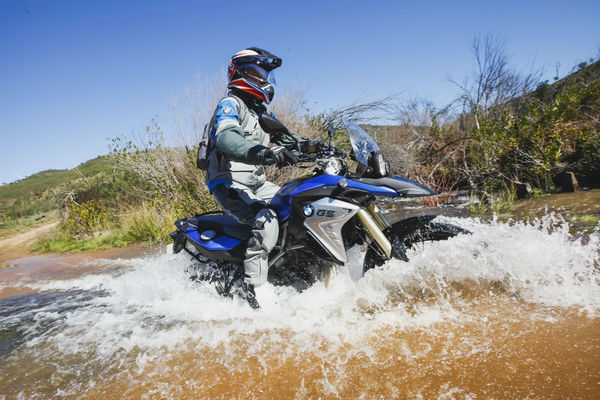
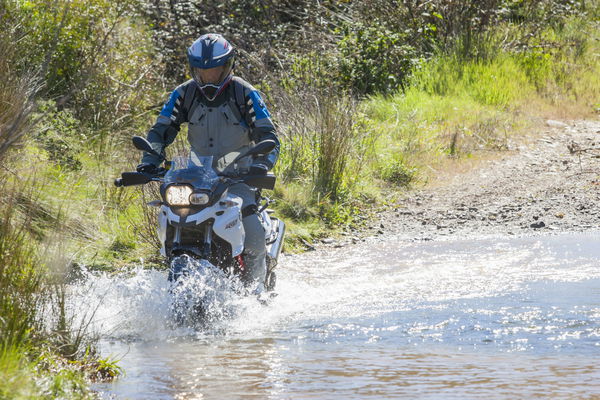
NOT much has changed on BMW's 2016 F700GS and F800GS but the German firm organised a UK-only launch in Portugal in a bid to improve sales of the middleweight adventure bikes. I, for one, got more than I bargained for.
BMW had left the route-planning for the test down to Dakar legend Simon Pavey, and it turns out that his idea of 'easy' off-road stages doesn't quite correlate with mine. I hadn't known there was going to be anything other than very light off-roading involved in the test - but Pavey's route proved to be the ideal test of what theses bikes are all about.
The F700GS is BMW's entry-level adventure bike so it's going to be bought by many people who, like me, are relative strangers to mud, rocks and river-crossings. In most cases, owners probably won't do any serious off-roading, as this is the road-biased version to the two bikes. It's soft power and easy-to-ride character is aimed specifically at less experienced riders who want to break into the adventure bike look, if not the complete round-the-world lifestyle.
The only changes to the current F700 are aesthetic – it has inherited 'beacons' on the side bodywork similar to those seen on the R1200GS. There are new colours, and there's a two-tone seat – and that's about it. Mechanically, it stays the same.
But you can choose between three different-spec options in the UK: the basic bike, which costs £7,815 and comes with ABS and is offered in Sakhir Orange with a grey frame; the higher-spec Rallye version which is £8,275 and features heated grips, handguards, an on-board computer, a centre stand, and white bodywork with a red frame; and the Rallye LS version, with a lower seat and lowered suspension. Of course, you can also add a multitude of accessories from BMW's extensive catalogue to make any of the bikes suit your exact requirements.
The Rallye version that we rode during the test is one of the most non-intimidating bikes you could hope to buy. The seat is relatively low (820mm, with lower 790mm and 765mm options available on the LS model), the suspension feels soft and pliant as soon as you sit on the bike, the controls are where you'd expect them to be, and when you thumb the starter button, the response is a very docile purr rather than a roar. I've never been a fan of parallel twin engines for this reason – to me they all sound like cheap commuter bikes and certainly never purposeful or exciting. But that's just me.
The heated grips on the Rallye come in handy (pardon the pun) straight away in the early morning chill and there are two levels of heat to choose from, both of which work well. Gear selection is easy, slick and solid, the clutch is light, and you could pretty much be as cack-handed as you like with the throttle and still not scare yourself – all traits which will prove to be ideal for less experienced riders perhaps stepping up to a big bike for the first time.
It has to be said that experienced riders will be disappointed with the lack of power the F700GS makes once you reach an open road. It's hard to understand why the more off-road-oriented F800GS boasts 10hp more than its road-focused stablemate, despite both bikes sharing the very same 798cc fuel-injected engine. BMW says it's because the F700 is intended to be more docile for less experienced riders while the F800 is aimed at more experienced riders - but it still seems odd to me. The counterpoint is that the 700 is 5kg lighter than the 800 when fully fuelled.
The dashboard is clean and clear with three different components – an analogue speedo, an analogue rev counter and a digital screen to the right with fuel gauge, gear indicator, temperature, time, and all the usual readings.
The ABS system that bites twin 300mm floating discs at the front provides plenty of stopping power on a bike that's never going to be travelling that fast anyway, and the three switchable suspension settings on the Rallye version (Comfort, Normal and Sport) are super easy to play with while on the move. While you can notice the differences, the bike still feels quite soft in 'Sport' mode – the result, no doubt, of built-to-budget components. After all, this is an entry-level model.
But as an easy-to-ride, unthreatening road bike, the F700GS totally hits the spot and will really help inexperienced riders gain confidence as they get miles under their belts. It was only when we went off-road that the bike's supposed all-round capabilities came into question.
Now, there's absolutely no doubt that an expert like Simon Pavey could throw the bike around off-road like a toy (he could probably do the same with a Harley-Davidson), and the F700 would be absolutely fine on really gentle dirt tracks with the odd bit of gravel strewn over them. But when it gets to more ambitious terrain like river crossings and trails made up entirely of loose rocks, then the bike's limitations soon reveal themselves: it sits too low, so bigger rocks strike the underside of the bike too easily. The more road-focused Anakee III tyres don't inspire as much confidence as the Scorpion Trail tyres on the F800 model, the smaller 19-inch front wheel refuses to roll over rough terrain with the same ease as the 21-inch on the F800, and the suspension is inferior and has less travel too.

So, on more challenging off-road sections, the F700 – for me at least – felt like an accident waiting to happen, and it was more by luck than judgement that I managed to keep it upright. But since this bike is aimed at newbies in the adventure bike market, they probably wouldn't be venturing onto anything rougher than a dirt road, in which case the F700 will do just fine. For anything more challenging, the F800GS is a must.
Switching bikes midway through our off-road adventure, I was astonished at how much easier it was to ride the F800 (standard model) and how much more confidence it inspired. It sits much higher up (880mm, with 850 and 820mm lower seat options), so doesn't get its underside jolted by larger rocks. It has superior suspension - including upside-down forks - which offers more travel and copes far better with ruts and rocks and bumps, and that larger (and slimmer) front wheel just rolls over tricky terrain far more confidently. The wheels are spoked too, so the extra flex that provides also helps. In fact, the bike felt so good off-road that I actually started to enjoy the experience rather than feeling overwhelmed (and moderately terrified) by it.
The 800 also has two different rider modes – 'Road' and 'Enduro' (deployed by simply selecting with the mode button then engaging and releasing the clutch lever). The Enduro mode, which alters the ABS and traction control settings to cope with rougher road surfaces, just gave me that bit more confidence. The tank is slimmer too, so standing up on the bike feels much more natural and comfortable.
The F800 feels good on the road too. With its extra 10hp to play with and a taller riding position, it would be just as home in the city as mucking around on dried-up river beds. It's perfectly happy being hustled around twisty A-roads too, despite its off-road ambitions. Certainly, the off-road biased F800 works better on the road than the road-biased F700 does off-road, so it's a better all-round bike – worth bearing in mind when it’s about a grand more expensive than the 700.
Like the 700, the 800 also comes with ABS as standard, while the Automatic Stability Control (ASC) and Electronic Suspension Adjustment (ESA) are optional extras. Of course, you can switch the ABS and traction control off if you prefer to have full control of the bike.
The huge range of accessories includes Satnavs, luggage and all the usual trimmings – so you can customise the bikes to suit your exact requirements. In most countries, customers by the basic models and spec them up themselves, but BMW says the 'package'* system works better in the UK. Maybe we're just lazy.
It should be easy for most riders to make a choice between these bikes. If you're a relatively inexperienced rider and don't intend to do any more than very gentle off-roading (if any at all), then the F700 is the bike for you. If you are a little more experienced and plan to really tackle more challenging trails and mud work, then the F800 is far better equipped to help you out.
Both bikes are available as A2 licence-friendly 47hp options and are available in dealers now.
*In total, there are seven different versions of the F700 and F800 models available in the UK. These are:
1. F700GS (base model)
2. F700GS Rallye. Includes heated grips, hand guards, on-board computer, centre stand, pannier fastenings
3. F700 Rallye LS. Same as Rallye but with low seat and low suspension. Does not include centre stand and pannier fastenings.
4. F800GS (base model)
5. F800GS Rallye. Includes heated grips, hand guards, on-board computer, centre stand, pannier fastenings.
6. F800GS Rallye LS. Same as Rallye but low seat and low suspension. Does not include centre stand and pannier fastenings
7. F800GS Blackline. Same as Rallye but with blacked-out styling
The Rallye and Blackline models can be ordered with lowered seat heights at no extra cost. The LS models do not include centre stand or pannier fastenings.
Model tested: BMW F800GS
Price: £8,850 (base model), £9,355 (Rallye and Rallye LS), £9,475 (Blackline)
Engine: 798cc liquid-cooled eight-valve inline twin
Power: 85hp @ 7,500rpm
Torque: 61.2ft @ 5,750rpm
Dry Weight: 191kg
Suspension: Upside-down 45mm diameter telescopic forks, single adjustable rear shock
Brakes: Twin 300mm floating discs, dual piston floating caliper, single 265mm disc at rear with single-piston floating caliper
Tyres: Front 90/90-21, Rear 150/70-17
Fuel capacity: 16 litres
Seat height: 880mm (with low seat option between 850 and 820mm)
Colours: Racing Blue Metallic Matt (base model), Lightwhite Uni (Rallye and Rallye LS), Blackstorm Metallic (Blackline)
Model tested: BMW F700GS
Price: £7,815 (base model), £8,276 (Rallye and Rallye LS)
Engine: 798cc liquid-cooled eight-valve inline twin
Power: 75hp @ 7,300rpm
Torque: 59.7ft @ 5,500rpm
Dry Weight: 171kg
Suspension: Telescopic 41mm diameter forks, single adjustable rear shock
Brakes: Single 300mm floating disc with twin-piston floating caliper, single 265mm disc at rear with single-piston floating caliper
Tyres: Front 110/80-19, Rear 140/80-17
Fuel capacity: 16 litres
Seat height: 820mm (with low seat option between 790 and 765mm)
Colours: Sakhir Orange Metallic, Mineral Grey Metallic (base model), Lightwhite Uni (Rallye and Rallye LS)
